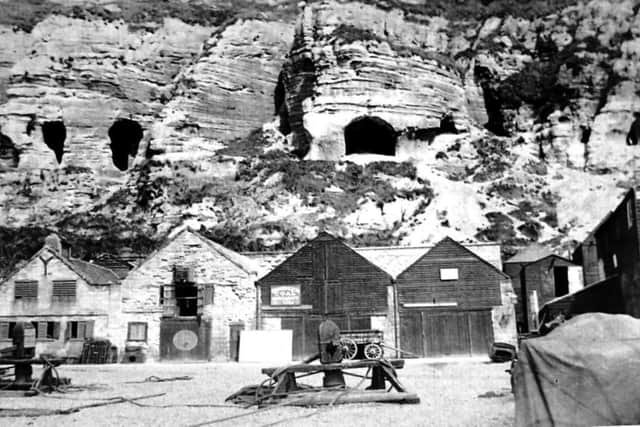When a Hastings family lived in a cave
and live on Freeview channel 276
He writes: There is no official record of them, but it is known that they are a common feature of the former cliffs all along the seafront, from Rock-a-Nore to the aptly-named Caves Road in west St Leonards, plus many others inland. The seafront cliffs have nearly all had shops and houses built up against them, and these ‘holes in the hill’ have become an in-built feature of many of them, but are not visible from outside.
The caves are in the sandstone rock that underlies much of the geology of the Hastings area. Sandstone is easy to excavate, making it simple to convert a fissure in the rock into a tunnel or cave. The rock can be broken down into sand, a valuable ingredient of concrete and cement, so it was widely excavated locally in the early days of building new properties in the town.
Advertisement
Hide AdAdvertisement
Hide AdCaves also had many other uses. They could be secure warehouses, and, in the days before fridges, they were good places to store perishable food at a reasonable stable temperature. Local legend says the caves were widely used by smugglers, but this would have been on a small scale, as the local Customs and Excise officers would know who had caves, and where they were. Although smuggling was done on a large scale by Hastingers, they were mostly helping the smuggled goods reach London, the main smuggling marketplace.


The best-known caves in Hastings are the extensive St Clements Caves, known as the Smugglers Adventure since 1988 when they were turned into a special tourist attraction. They began life as natural caves, which were excavated for the sand in the late 18th century, and then made bigger for visitors in the 1830s. In World War Two the three acres of caves were turned into an air-raid shelter, with 298 beds crammed together. Also used for safety during the war were the caves under the Hastings Observer building in Cambridge Road.
The most visible caves in Hastings used to be the line of them halfway up the cliffs at Rock-a-Nore Road, but now obscured by undergrowth. These were frequently used as homes by a variety of people, including three generations of the Butler family who lived there in the 1850s, and who became a tourist attraction in themselves. A journalist reported that they had a “good-sized sitting room” and “a miscellaneous assemblage of pigs, dogs, rabbits, goats and squirrels, and a variety of other bipeds and quadrupeds, all dwelling socially and pleasantly together.” In the 1960s these caves became very popular with ‘hippies’, and eventually in 1968 Hastings Council bricked them up.
Have you read? Hastings Old Town loses a much loved local character